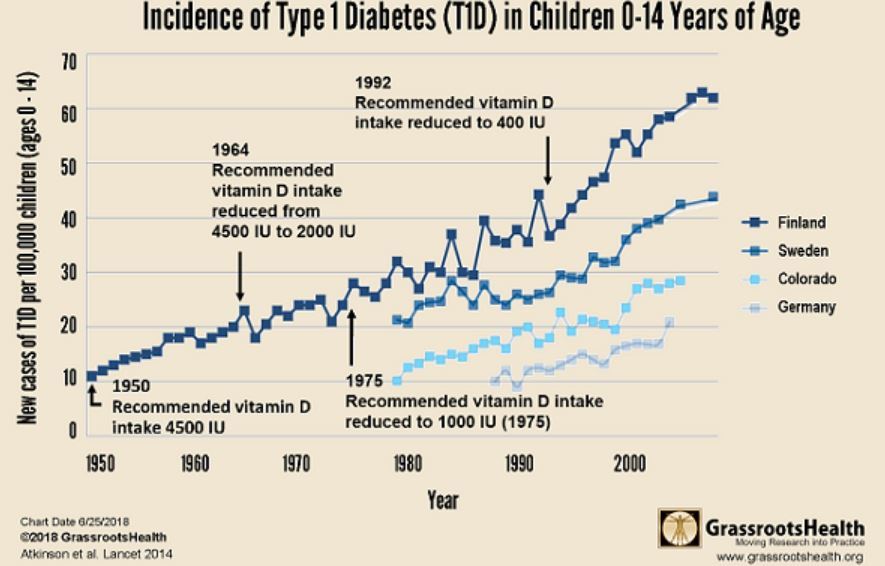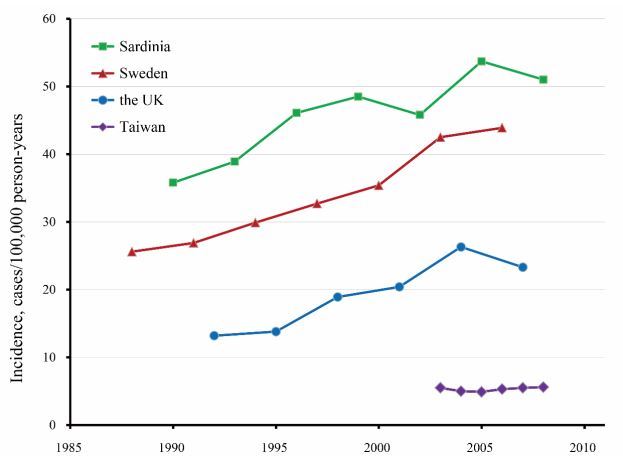Type 1 Diabetes is increasing – decreased vitamin D is one of the many possible reasons
Incidence and Trend of Type 1 Diabetes and the Underlying Environmental Determinants.
Diabetes Metab Res Rev. 2018 Sep 11:e3075. doi: 10.1002/dmrr.3075. [Epub ahead of print]
Xia Y1,2, Xie Z1,2, Huang G1,2, Zhou Z1,2.
1 Department of Metabolism & Endocrinology, The Second Xiangya Hospital, Central South University, Changsha, Hunan, China.
2 Key Laboratory of Diabetes Immunology (Central South University), Ministry of Education; National Clinical Research Center for Metabolic Diseases, Changsha, Hunan, China.
 Diabetes at Grassroots Health
---
1. Pages listed in BOTH of the categories Diabetes and Infant/Child
a proxy for T1D
{category}
Grassroots Health New Project Launch - Type 1 Diabetes Prevention! Aug 2018
Prevent T1D with Vitamin D and Omega-3
T1 diabetes OR type1 diabetes in title 107 as of April 2018
Diabetes at Grassroots Health
---
1. Pages listed in BOTH of the categories Diabetes and Infant/Child
a proxy for T1D
{category}
Grassroots Health New Project Launch - Type 1 Diabetes Prevention! Aug 2018
Prevent T1D with Vitamin D and Omega-3
T1 diabetes OR type1 diabetes in title 107 as of April 2018
PDF is available free at Sci-Hub 10.1002/dmrr.3075

A wealth of epidemiological studies concerning the distribution of type 1 diabetes (T1D) around the world have pointed to the appreciable variation in the incidence of T1D among disparate age groups, ethnicities and geographical locations. On the whole, the incidence of childhood T1D has been on the rise and a plausible inverse relationship between the initial incidence rate and the following annual increase in incidence has been raised.
Countries that used to exhibit lower incidences tend to have steep annual increase whereas those with already-established high incidences are more likely to show a modest increase or even stabilization in T1D incidence.
Environmental agents considered responsible for the current evolving pattern of T1D incidence will be detailed, mainly including the increasing prevalence of childhood obesity, viral infections in a chronic manner, maternal-child interaction such as breastfeeding and latitude-ultraviolet B-vitamin D pathway . Certain rationale has been put forward in an attempt to explain the potential association between environmental agents and development of T1D. For instance, accelerator hypothesis regards insulin resistance as the promoter of earlier disease onset in obese children whereas the negative correlation of microbial infections in background populations with incidence of T1D represents the basic component of the hygiene hypothesis. Further investigations are still warranted to verify these theories across multiple ethnic groups and to identify additional contributors to the variation in T1D incidence.
